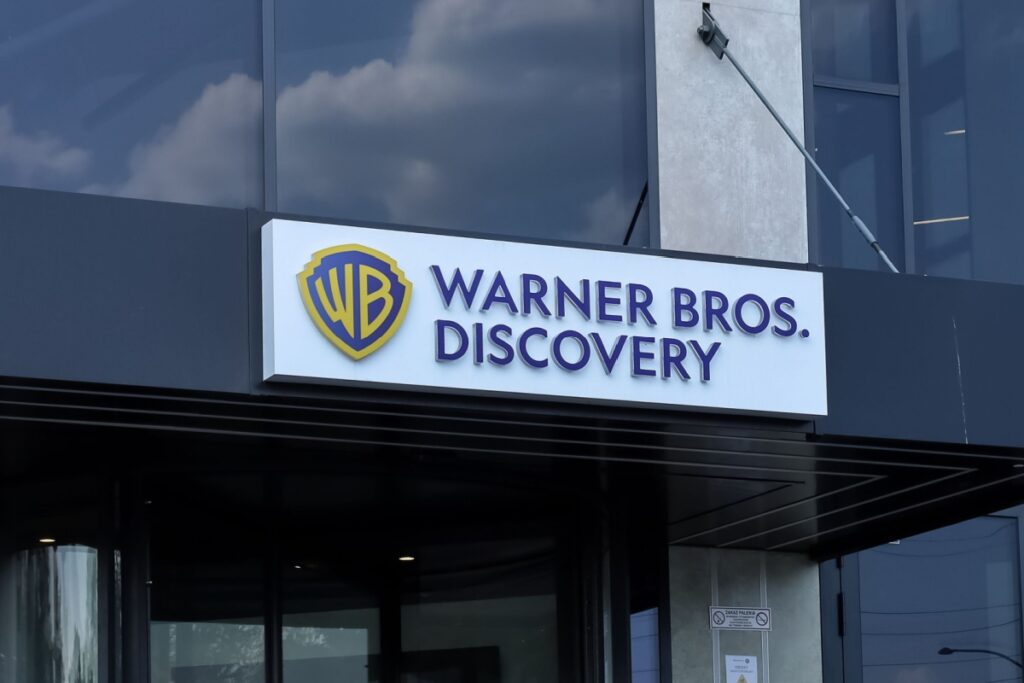Warner Bros. Discovery (WBD) has announced that its board of directors will undertake a comprehensive strategic review following multiple unsolicited approaches for either the full company or its studio operations. According to the company’s disclosure, the intention is to evaluate a broad set of alternatives, including a full sale or the divestiture of specific business units.
Board Signals Willingness to Explore Sale
In the official statement, WBD emphasised that the review is not a commitment to sell the company or any particular asset. At the same time, the board reaffirmed its previously disclosed plan to split the business into two separate public companies by mid-2026: one focused on streaming and studio operations, the other on traditional and cable networks.
Following the announcement, WBD’s share price rose sharply, gaining more than 9% in early trading. The surge reflects investor interest in the potential unlocking of value through either the restructuring or a change of ownership.
Potential Suitors and Valuation Dynamics
Among the parties reported to have expressed interest is Paramount Skydance, led by David Ellison and backed by his father, Larry Ellison. Media reports indicate that Paramount’s initial proposal valued WBD at approximately US$20 per share, a figure the WBD board deemed insufficient.
Analysts estimate WBD’s breakup value at around US$74 billion, when considering the studio/streaming unit, the traditional cable business, and the company’s debt load.
In addition to Paramount Skydance, other potential bidders include Comcast Corporation and Netflix, Inc.. However, both firms appear cautious: Netflix has publicly indicated it is unlikely to pursue large-scale media acquisitions, and Comcast is in the midst of its own structural transformation.
Strategic Rationale and Industry Context
WBD is evaluating whether a transaction might better serve shareholder interests than the planned breakup alone. The review comes at a time when traditional media firms face mounting pressure: streaming competition is fierce, costs are escalating, and linear television viewership continues to decline.
The planned division of the company into two entities aims to isolate the high-growth streaming and studio business from legacy cable networks. Under that structure, the streaming/studio unit would house assets such as HBO and DC Studios, while the linear network company would hold brands such as CNN and TNT Sports.
Significantly, WBD carries a large debt burden, estimated at roughly US$30 billion to US$35 billion, largely stemming from the 2022 merger of WarnerMedia and Discovery, Inc. This debt load has been a central factor in the company’s strategic review and investor interest.
Implications and Uncertainties
While the strategic review opens multiple pathways, key uncertainties remain. There is no set timetable for completion, and public disclosures explicitly note that no decision has been made to accept any offer or proceed with a sale.
Regulatory risk is also significant. A transaction combining major studios, networks and streaming platforms would likely trigger scrutiny by the U.S. Federal Trade Commission (FTC) and the United States Department of Justice (DOJ). Antitrust experts warn that consolidation in an already concentrated media environment could face resistance.
Furthermore, if WBD proceeds with its planned two-company split, it remains possible that the streaming/studio entity could command a higher valuation on its own, thereby shaping the board’s decision regarding whether to sell the entire company, parts of it, or hold the planned breakup. In short, the outcome of the review could affect the company’s structure, valuation and competitive position in a rapidly evolving media landscape.


